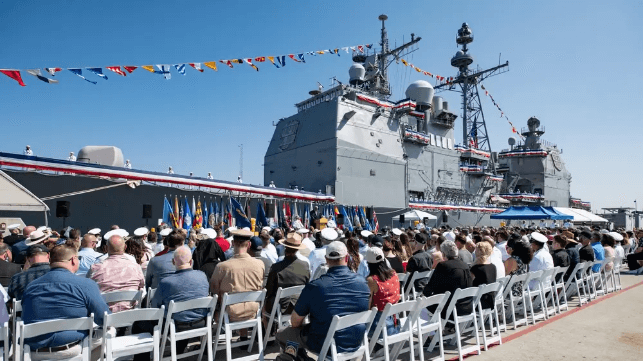GAO: U.S. Navy Wasted $2B on Failed Cruiser Modernization Effort
Only three ships completed the program, and all will phase out before 2030

The U.S. Navy ended up wasting nearly $2 billion on four aging cruisers because of poor planning, lax oversight and an unwillingness to hold private-sector contractors accountable for mistakes, according to a new report from the Government Accountability Office. The findings raise questions about the value of life-extension programs - including the $10 billion investment that the Navy is about to make in two dozen older Arleigh Burke-class destroyers.
Of the 11 warships that began the program, only USS Gettysburg, Chosin and Cape St. George remain - and none of these ships will achieve the five-year life extension originally planned. Each will make one final deployment, and all three will phase out of service by 2029. The total program cost - about $3.7 billion - would have been enough to buy two new Arleigh Burke-class destroyers or three new Constellation-class frigates.
The outcome has been 10 years in coming. In 2014, the Navy reached an agreement with its congressional oversight to sideline 11 of its 22 Ticonderoga-class cruisers for a long-term upgrade program. Over the course of the program, each vessel would undergo a four-year comprehensive refit, including much-needed hull maintenance and combat system upgrades. During the refit, each vessel would be in reduced operating status, saving money for the Navy during a time of austere budget pressure.
After initial rejection by lawmakers in Congress - who were skeptical of the idea of pulling 11 cruisers out of the fleet at once - the program began in 2015, but on a rolling timeline that would have no more than six hulls in refit at a time.
After the launch of the program in 2015, four of the ships were found unsuitable for repair and were removed. In 2022-24, four more hulls were decommissioned before they completed their refits, including USS Hue City, Anzio, Cowpens and Vicksburg. This effectively wasted the $1.84 billion in funding that was spent on improvements to these four hulls, GAO assessed.
GAO found several causes for the program's failure. First, the cruisers were in poor condition at the outset. They were used heavily in the War on Terror era, and had known issues with hull cracking and fuel tank leaks. In 2011-14, the Navy decided to stop maintaining some of them: At the time, it planned to decommission seven Ticonderoga-class hulls early over the course of 2013-14.
Second, the Navy did not plan the refit program using any of the management tools it would use for a comparably-sized newbuild program - like an acquisition strategy, independent cost estimate, risk management plan, baseline, or leadership-level program oversight meetings.
Third, the steep crew reduction that occurred during reduced operating status allowed the ships' systems to deteriorate further, sometimes undetected. Additionally, vessel ownership transferred to NAVSEA when each ship entered reduced operating status, and the ships' new managers failed to incorporate input on repairs from regional maintenance centers and port engineers who worked with these vessels previously - resulting in incorrect work specifications for contractors.
Fourth, contractor quality assurance was a serious and repeated problem across the program - particularly with weld quality. Regional Maintenance Centers (RMCs) issued about 1,400 corrective action requests for improper work on the cruisers over the course of the program. In one egregious example, a contractor made a series of botched repair attempts on the sonar dome of USS Vicksburg. Over the course of 13 failed attempts, the contractor could not reattach and repressurize the dome. The contractor attempted to use hardware-store supplies like "plastic wrap, tape with common store-bought glue, expanding foam and as seen on television sealant products" in a last unsuccessful attempt. This project took so long that the Navy was forced to take the ship out of drydock without completing it; the ship was ultimately decommissioned.
Fifth, in 2018-20, senior Navy leadership instructed RMCs to stop penalizing contractors for faulty work. Top leaders at NAVSEA discouraged the maintenance establishment from using traditional tools of enforcing contract performance - like monetary penalties, payment retentions and inspection checkpoints - and disbanded the independent NAVSEA Regional Maintenance Offices, which had the duty of checking RMCs' work.
"While NAVSEA leadership did not respond to our requests to discuss this issue, officials across several offices told us that the Navy wants to maintain a positive working relationship with the contractors because of its dependence on them to maintain, repair, and modernize its fleet," GAO reported. "However, in this instance, its efforts to do so resulted in making it more difficult for the Navy to leverage quality control measures."
